
flintlockfibers
He/HimBit out there, maker of random things.
8 posts
Latest Posts by flintlockfibers
I thought I’d share one of my favorite artists with others who may have never heard of him.
Denzil Omer Seamon (“Salty” Seamon) was from Indiana. He served in WW2 in the Pacific. While serving, he documented his experiences through his art. When he returned to Indiana, he became a full time artist, working mostly around Vigo County, Indiana. His works are mostly watercolors of people and places around Vigo County or from his time in the military. (He did make a very interesting scale model of the HMS Bounty, as well. To my knowledge, this may have been one of the only 3D pieces he made.)
A large collection of his work is displayed around Rose-Human Institute of Technology. Over 600 works were donated to Rose, who granted him an honorary doctorate in 1979. He died in 1997.

“Red Maple”
D. Omer Seamon
Watercolor on paper
12 x 18 inches
https://rosehulman.pastperfectonline.com/webobject/C143F819-994E-41B6-9A32-083965281943

“Chow Line S.P.O.”
D. Omer Seamon
Watercolor on paper
8 x 12 inches
https://rosehulman.pastperfectonline.com/webobject/6B52EE8A-E868-489E-9ACF-424830258981
(I was going to include the Collection link to the model of the HMS Bounty, but I am unable to find it in the database. Last I heard the ship, in its display case was located in the office of the President. I know I took a picture of it, but I don’t know where that would be saved, unfortunately. If I find it, I’ll add it.)
That’s really cool! This highlights the fact that we don’t know the purpose of a lot of historical objects. Discussion about purpose and use can be extremely beneficial!
The video link, if anyone is interested
https://youtu.be/76AvV601yJ0

bruh what
They’re so precious!!!



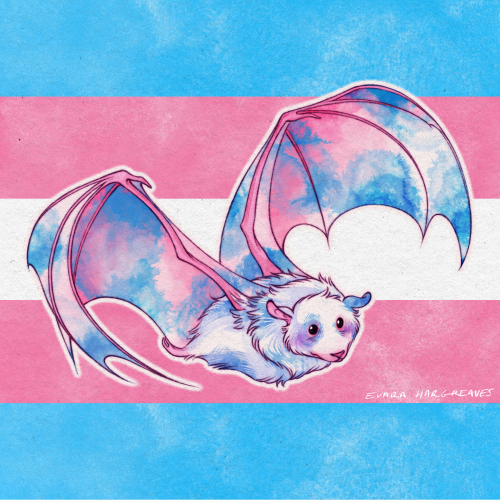

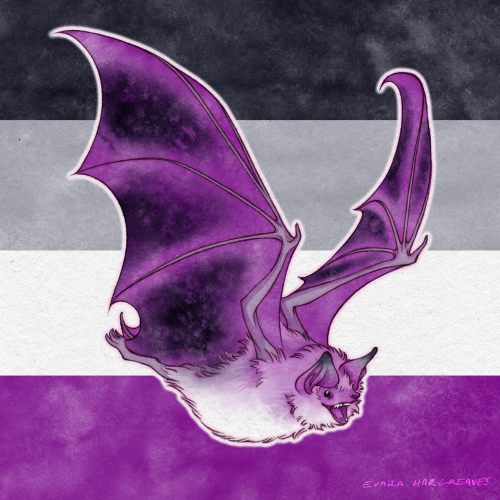


I made some pride bats, enjoy! 🦇🏳️🌈
Some fabulous art history lessons
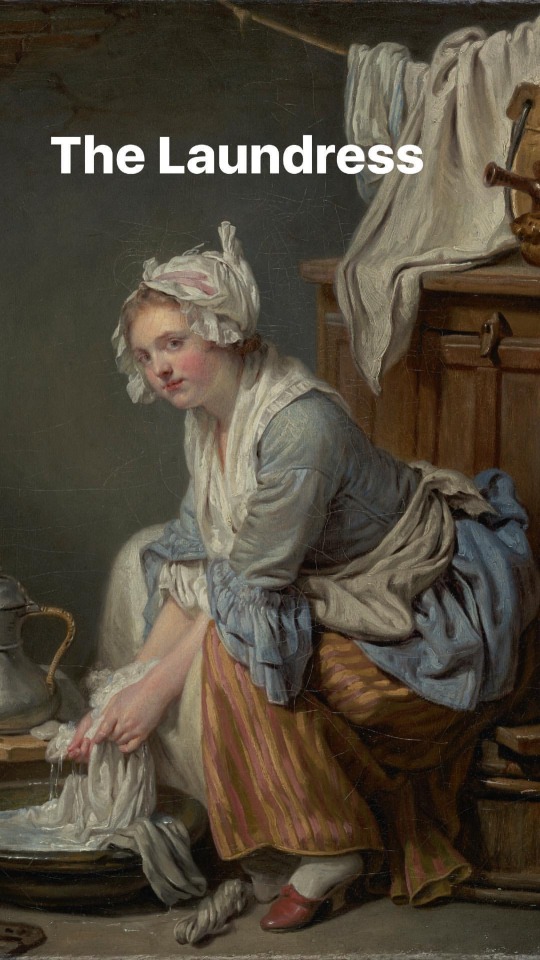

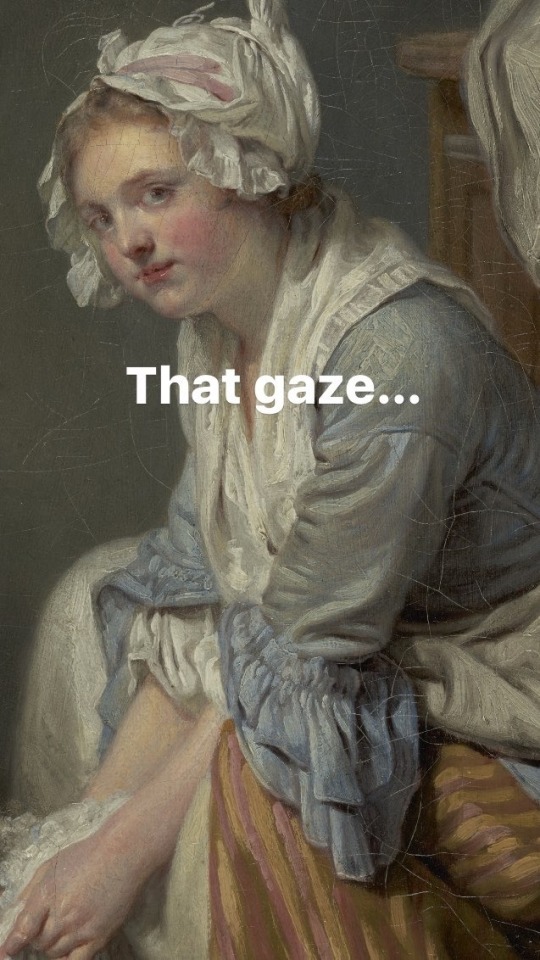
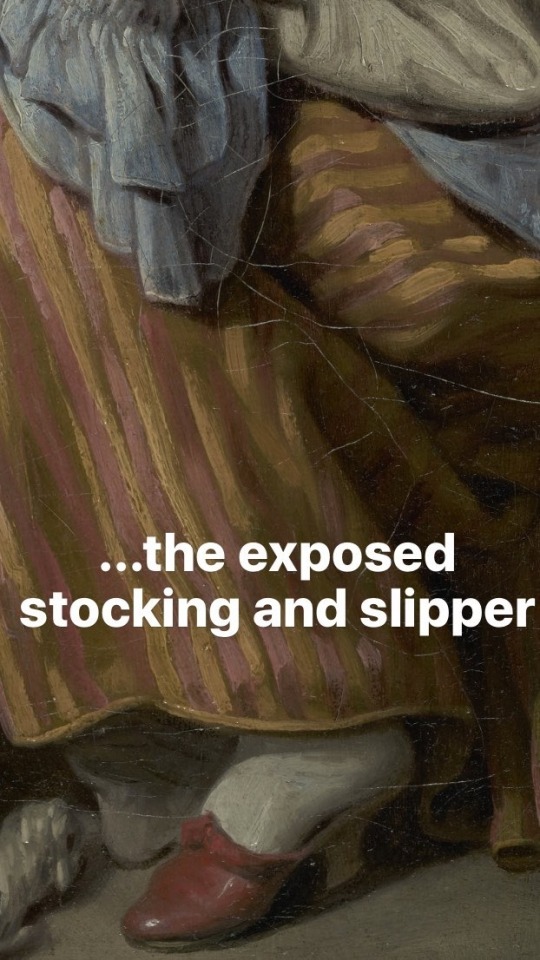
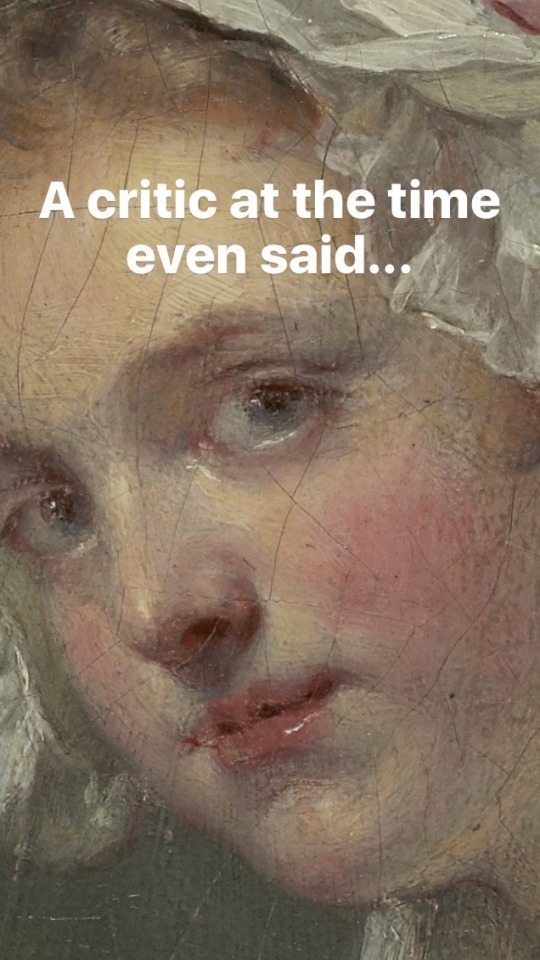
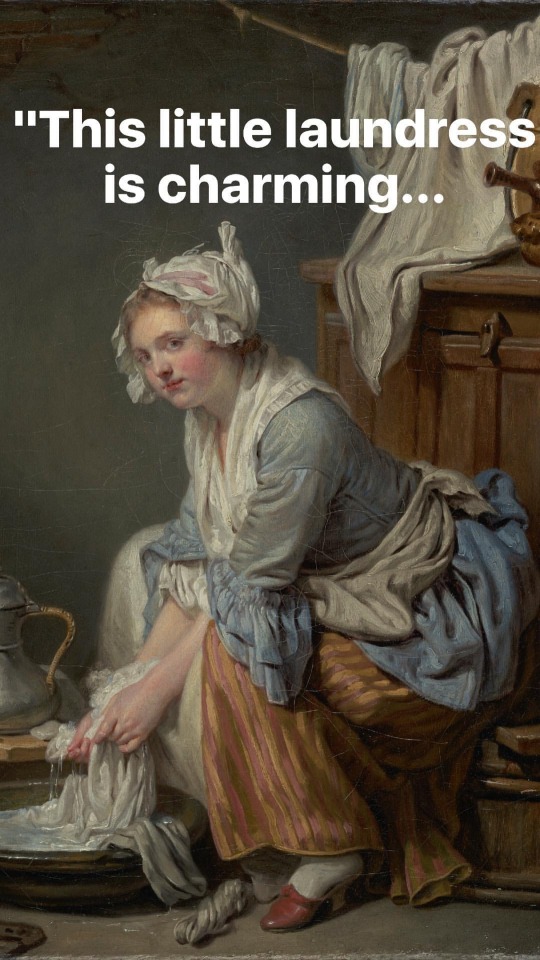
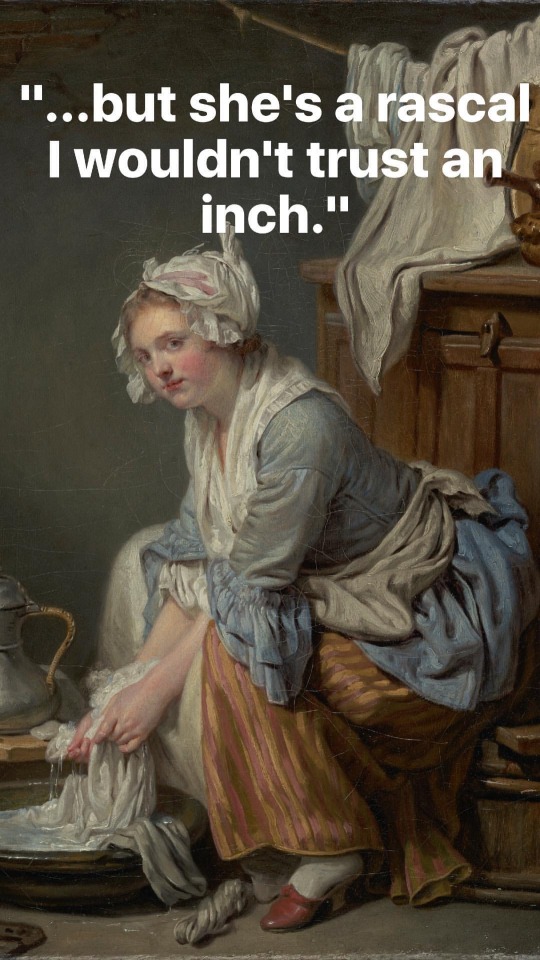

The story behind The Laundress.

After a huge surge in interest I set up a server for those interested in or who currently sew and craft historically,with a social focus on menswear! (All are welcome of course)
So come on, chat with us, we'll have a dandy time~
Amazing references! I’ve been looking for some references like this for a really long time!
Also, a great chance is looking for re-enactment events and making connections with the people there to find out some more information about proper outfit for American fur trade in forts in the 18th century.
Op got any advice on finding sources for 18th c mens fashion? (most of the things i get are for women And That Aint Me Goal)
Oh boy I sure do!!! (I assume you mean sewing and wearing it?)
It is, unfortunately, pretty hard to find resources for 18th century mens fashion on the internet. (Note to self: make more tutorials.) But as I’ve been doing it for some years I do have a list of useful stuff!
My first piece of advice is to get yourself a copy of Costume Close Up. It’s my most used reference book, and my sewing is SO MUCH BETTER since getting it. The first half of the book is women’s garments and the second half is men’s garments (11 mens garments, all quite nice, with pattern diagrams and pictures), and it goes over the construction in fantastic detail. It explains so, so much. 18th century clothing construction is completely different from modern clothing construction, but once you learn it it’s quite straightforward, and lends itself far better to hand sewing in a lot of places.
(Really, I cannot stress enough how totally different it is. If you haven’t done any modern sewing before then that’s fine, you’re probably in a better starting place to learn 18th century ones than I was! I took a 2 year college fashion course where I learned modern construction techniques, and about 95% of what I learned there is irrelevant to 18th century sewing.)
One place Costume Close Up is a bit lacking is in the shirt chapter, because the shirt it features had the cuffs and collar replaced in the early 19th century and has no ruffles, so there’s no mention of sleeve buttons or how to put ruffles on.
Since I’ve answered a few 18th century fashion questions before, I shall leave links to those posts:
In which I answer a general (not 18th century related) question about getting started and what’s a good first sewing project.
In which I show how I do the plackets on my fall front breeches (by machine).
In which I explain how I put interfacing and lining in (by hand).
In which I answer a question about how I do shirt patterns.
In which I explain how I make deaths head buttons.
In which I ramble excitedly about 18th century fabric saving techniques and suchlike.
In which I answer a question about hair.

For hair, I really recommend getting a copy of The American Duchess Guide to 18th Century Beauty. Yes, it’s only got tutorials for women’s styles in it (because it’s a companion to their dressmaking book) BUT all the techniques are easily transferable to mens hairstyles! And it has recipes for powder and pomatum and stuff! ‘Tis a good resource, with much good insight into 18th century hair.
I’ve got a blogspot blog where I post about my sewing projects in a lot more detail, so I’ll leave links to some of the more informative of those ones:
In which I talk about shirt ruffles.
In which I talk about the pattern of my 1730′s coat, and a little bit about the construction.
In which I talk about the construction of my 1730′s coat in excessive detail with about 50 photos.
This waistcoat post has some decent construction photos too.
This is a very tiny post about a queue bag with not many pictures, but I’ll leave a link anyways because a queue bag is an important accessory.
(But be suspicious of any posts earlier than 2018, because a lot of my construction is much less good before that. The further back in the archive you go the less idea I have of what I’m doing.)
If you want to do embroidery I recommend getting a copy of 18th Century Embroidery Techniques by Gail Marsh. Much like Costume Close Up, it explains everything! How an 18th century embroidery shop worked, how to transfer a design and stretch it in an embroidery frame, and all the necessary stitches and techniques. It has chapters on the many different kinds of embroidery and I really need to try them because I have only made 2 embroidered waistcoats and neither of them have proper 18th century embroidery. (I find the metal embroidery chapter especially intriguing, and have a bunch of metal embroidery supplies bookmarked on etsy. Did you know you can still get metal spangles and purl and all that stuff?! Metal embroidery may have fallen out of fashion in the Western world but as far as I can tell it’s still going strong in India! I’d really like to try crewel too. I love those big bold wool flowers.)
18th Century Fashion in Detail from the V&A is a fabulous book that I recently acquired. Not a pattern book, but a very good inspiration book. It has detailed photos of many many garments (about half of them are menswear) and line diagrams of what the entire garment looks like. The variety of embellishments shown there is mind boggling. There’s a lot of amazing embroidery, of course, but there’s also a painted waistcoat, one trimmed with strips of dyed green rabbit fur, and one with a pattern of decorative holes punched in it to let the lining show through! The introduction also details how the various businesses that made up the clothing industry worked.
(While I provided internet links for the books I mention, I strongly encourage you to order books through your local bookstore if you can.)
Other useful links:
The Cut of Mens Clothes 1600-1900 - a book of patterns that’s available online as a free pdf (and somehow, magically, still hasn’t been taken down for copyright infringement. Which is good because it’s out of print and expensive!)
LACMA Pattern Project - More patterns on grids that you can scale up! I look forward to trying their c. 1790 cutaway coat one.
I should write a post sometime about how I scale up patterns to fit me. I basically trace out a little diagram of the pattern pieces, measure myself, guess at how big the various pieces ought to be based on that, and draw them up full scale on a big roll of stiff brown paper. An unprofessional method, I think, but it works surprisingly well for me. (Though that might only be because I’ve had years of practice… my earlier patterns were not good.) I usually mock them up in old sheets or very shitty thrift store fabric to make sure that they fit.
Burnley & Trowbridge - they have some good historical sewing tutorials on their youtube channel.
Wm. Booth Draper at the Sign of the Unicorn - he posts a lot of stuff on facebook about very specific details in 18th century fashion. I’ve learned a good deal about shirts from those posts. Just type whatever you’re looking for into the page’s search bar and there might be posts about it!
Tips and tricks to make hand sewing easier.
Making linen buckram
Video of some stretches to do to prevent damage to your hands
The Historical Sew Monthly Challenge - This isn’t specifically an 18th century thing, but it’s something I’ve been participating in (to various degrees) since 2013, and it’s actually what prompted me to make my sewing blog. I’m trying to do at least half the challenges this year. I find it to be good motivation to finish things, and the people who run it are really lovely.
18th century notebook - pages of links to extant clothing, organized by kind of garment.
18th Century Material Culture - Lots of… slide shows I guess? They’ve got a bunch of pictures of specific garments all collected together, anyways. But I’m a tad suspicious of them because their coats page has a few sleeved waistcoats on it, and sleeved waistcoats are very obviously not the same thing as coats.
Portrait Timeline - this site is just a whole lot of portraits organized by decade. The more time you spend staring at portraits, the more little details you notice, and the better your styling will be.
Speaking of which, here’s a link to my pinterest. I know a lot of people hate pinterest but I find it to be an excellent way to organize my historical reference pictures. (Oh my god I just noticed I have over 800 pins on the extant 18th century waistcoat board?) Beware of pinterest captions in general though, there’s a LOT of mislabeled stuff floating around there. Thank goodness we have reverse google image search.
There are probably more things that I’m forgetting at the moment, but if I think of them I’ll edit this post & add them.
Some places to buy stuff:
Puresilks - They have an incredibly huge variety of silk, especially taffeta. (Which reminds me, stay away from slubby dupioni if you’re looking to be historically accurate!) I’ve ordered from them a few times and have always been pleased with the quality.
Silk Baron - never bought anything from them but I’ve heard they’re good?
Renaissance Fabrics - Wool, linen, silk, and some other stuff. They have a really good selection of wool colours. I have two pieces of wool from them and it’s nice. And they will send you up to 4 swatches for free!
Burnley & Trowbridge - I got the buckles for my breeches & stock from them, and many of my button blanks. They have fabric and ribbon too, among other things! (And a few books, I should get the little one about tailoring techniques next time I order something from them.)
Wm. Booth Draper - They carry much the same stuff as Burnley & Trowbridge, and it’s very nice quality. Fabric, thread, buckles, buttons, relevant books, etc. I’ve bought a few pieces of fine linen from them and it’s rather expensive, but worth it. I have a bit of their silk satin ribbon too and it’s wonderful.
American Duchess - They mostly do women’s shoes, but this year they finally added 3 mens styles! They have some stockings that work for menswear too.
Sock Dreams - I don’t know if they realize it but they have quite a few passably 18th century stockings! (And they’re more affordable than reproduction silk ones.) The O Woolies are perfect for an everyday 18th century look, but they also carry a lot of vertical stripes - something that was very popular in the 1780′s and 90′s! You see them a lot on fashion plates, but sometimes you see horizontal stripes too. And occasionally other patterns.
Delp Stockings - I’ve never bought anything from them before, but they have a lot of historical stockings.
LBCC Historical - cosmetics. I have their white foundation, liquid rouge, and lip stain and they’re good! They last forever too, you only need the teeniest little speck. (A word about the white face paint though - it looks lovely in dim lighting but terrible in bright sunlight or camera flashes.) Darkened eyebrows were part of 18th century makeup too, and for that you can just burn the round end of a clove and use it like a pencil.
I realize that a lot of the things on this list are fairly expensive, so you ought to have a good hard think about how much 18th century sewing you want to do before investing in them. Since this is my One Big Thing that I spend the majority of my free time on, and since I wear much of what I make for everyday, I feel okay about buying some expensive supplies now and then. And I do try to be very economical with my good fabric, and use all my scraps, just like they did in the 18th century! This isn’t to say you can’t make nice things with cheaper supplies though. I have several wool things made from picked apart thrift store skirts, and some plain cotton things that are somewhat inaccurate but still good. The selection at my local fabric store isn’t very good, but nice things do turn up occasionally.
Some general advice:
Trust the overall shapes of historical patterns, even if they look weird to your eyes. They aren’t supposed to fit the same way modern clothes do. A lot of movie costumes look “off” because they add modern amounts of ease to the coats.
Just as you cannot always trust movie costumes or pinterest captions, you should be aware that the styled outfits on museum mannequins sometimes get things very wrong also.
Proportions are also super important in patterns! Look at portraits and observe how big things are in relation to other things, and where they sit on the body.
If you make your patterns out of stiff paper, like I do, you can punch holes in the pieces and hang them on shower hooks. This makes them easy to store because you can put several patterns on a coat hanger and hang them up in the closet.
Label your pattern pieces. Do it. Write the date you made the pattern and what the pattern is for on every single piece. (I admit this is something I’m still bad about) You may think “Oh, I’ll remember what this is for” but then 6 months later you’ll find 4 different unlabelled breeches patterns and have no idea which is the one that actually fits you properly.
Wipe down the work table before you set your sewing on it, especially if your fabric is a light colour, and even more especially if it’s a table that multiple people use. Wash your hands before doing hand sewing, and wash your ironing board cover once in a while too. Clean your iron when it gets gunky.
On that note, you should also keep your sewing machine clean and well oiled. The manual will tell you what to do.
Machine sewing and hand sewing are both good! I do both in most of my projects, in varying amounts. A lot of 18th century techniques are much much better done by hand, but I don’t see any problem with doing some machine sewing (instead of the backstitch or running stitch) on certain construction seams that aren’t visible, especially for shirts. (I should note that while I do strive for accuracy in most of my projects, I am not a reenactor.)
It’s best to use cheap fabric for your first few attempts, because you won’t be brilliant right away, but don’t be afraid of expensive material forever! It’s so much nicer to work with nice materials, and you should use them instead of hoarding them.
Here’s a post of some of the garbage I made when I was first trying to sew clothes. Don’t be discouraged by your early attempts! Keep sewing, we all have to start somewhere! With years of practice I’ve gotten so much better, and so will you!!
It’s hard to find good lace these days, and if you can only find shitty lace then plain gauze ruffles are always a better choice. I’ve tried putting bad lace on shirts and sadly there’s no way to hide its badness.
A few accessories can make a world of difference in how “complete” your ensemble looks. Gloves, hats, watch chains, muffs, fans, a walking stick if you can get one. All good things to add!

Good luck with your sewing! Have fun and remember to wax your thread and use a thimble!
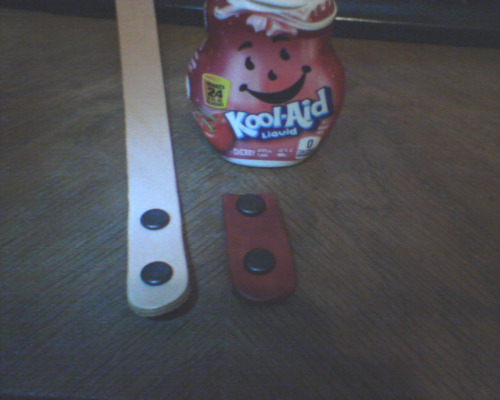
Here’s a “life-hack” for you. Apparently concentrated Kool-Aid can be used as a pretty effective leather dye. I was making a drink while cutting the snaps off some new straps for my pauldrons and I got curious, so I tried it, thinking, “ok even if this works, it will just wash out.” Nope. It took the “dye” (undiluted) in about 3 seconds. After drying for about an hour and a half, it would not wash off in the hottest tap-water. It would not wash out after soaking for 30 minutes. It did not wash out until I BOILED it, and even then, only by a tiny bit and it gave it a weathered look that was kind of cool. Add some waterproofing and I’d wager it would survive even that. That rich red is only one application too. Plus it smells great, lol. So there you go, cheap, fruity smelling leather dye in all the colors Kool-Aid has to offer.
